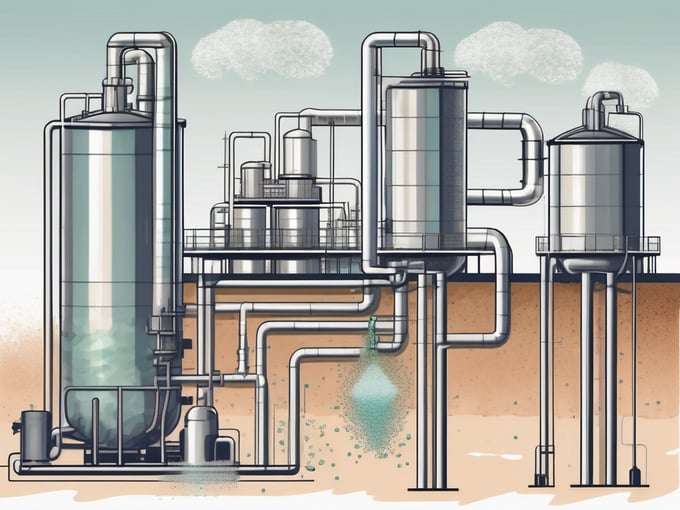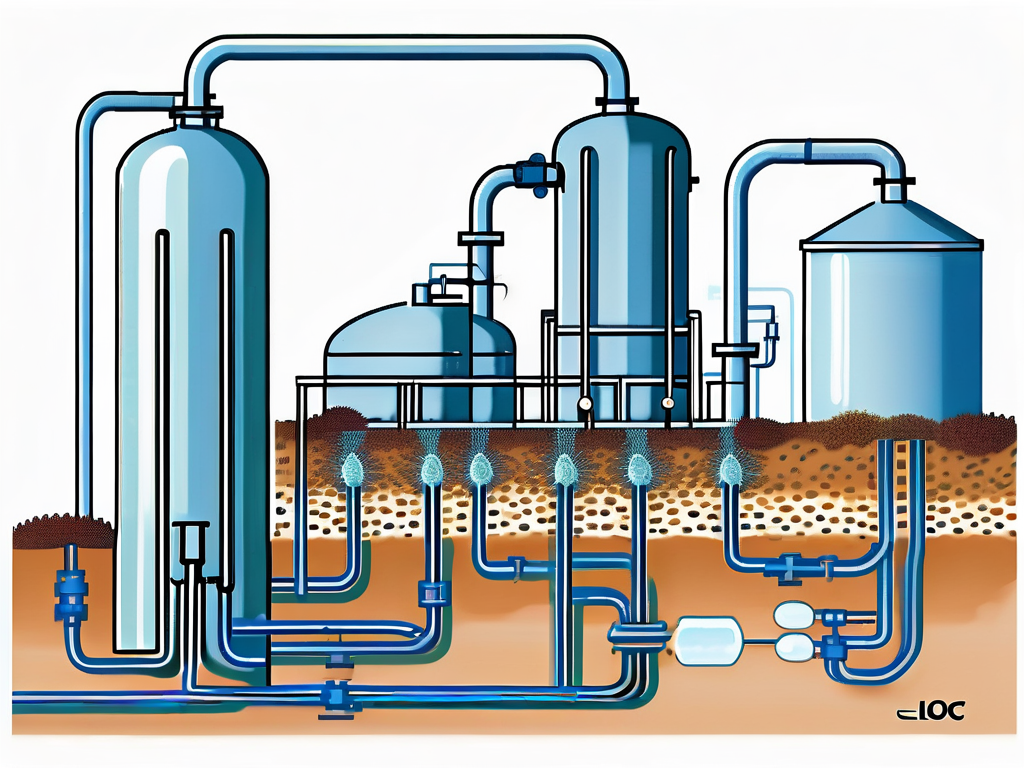
Floc: Wastewater Treatment Explained
The term 'floc' is a critical concept in the field of wastewater treatment. It refers to a mass or cluster of particles, often microscopic, that come together in a treatment process to form larger, more easily manageable aggregates. This process is essential in the effective removal of contaminants from wastewater.
Understanding the role and behavior of floc in wastewater treatment is crucial for anyone involved in the field, whether as a technician, engineer, or researcher. This glossary entry aims to provide a comprehensive and detailed understanding of floc, its formation, its role in different stages of wastewater treatment, and the factors affecting its quality and efficiency.
Formation of Floc
Floc formation, also known as flocculation, is a process that involves the aggregation of particles into larger clusters. This process is facilitated by the addition of chemicals, known as coagulants or flocculants, which neutralize the charge on the particles, allowing them to come together.

Once the charge is neutralized, the particles can attract each other and form larger clusters. These clusters, or flocs, are easier to manage and remove from the wastewater. The process of flocculation is a delicate balance that requires careful control of conditions and chemical dosages.
Coagulation and Flocculation
Coagulation and flocculation are two closely related processes that are often used together in the formation of floc. Coagulation involves the neutralization of charges on the particles, which is achieved through the addition of coagulants. These coagulants are typically metal salts, such as aluminium or iron salts.
Flocculation, on the other hand, involves the aggregation of the neutralized particles into larger clusters. This is facilitated by the addition of flocculants, which are typically polymers. The flocculants form bridges between the particles, allowing them to come together and form larger clusters.
Types of Floc
There are different types of floc that can form in a wastewater treatment process, and these can vary in size, shape, and density. The type of floc that forms can be influenced by a variety of factors, including the type of wastewater, the chemicals used, and the conditions of the process.
Some common types of floc include pin floc, which is small and loosely bound, and sweep floc, which is large and tightly bound. The type of floc that forms can have a significant impact on the efficiency of the treatment process.
Role of Floc in Wastewater Treatment
Floc plays a critical role in the treatment of wastewater. Its primary function is to aggregate the particles in the wastewater, making them larger and easier to remove. This is particularly important in the removal of suspended solids, which are a major source of pollution in wastewater.

Additionally, floc can also help in the removal of other contaminants, such as heavy metals and organic compounds. These contaminants can bind to the floc, allowing them to be removed along with the floc. The effectiveness of this process can be influenced by the size and density of the floc, as well as the type of contaminants present.
Sedimentation and Filtration
Once the floc has formed, it can be removed from the wastewater through processes such as sedimentation and filtration. In sedimentation, the floc settles to the bottom of a tank, where it can be collected and removed. The rate at which the floc settles can be influenced by its size and density, as well as the conditions of the process.
In filtration, the wastewater is passed through a filter, which traps the floc and allows the treated water to pass through. The effectiveness of this process can be influenced by the size of the floc, the type of filter used, and the conditions of the process.
Disinfection and Final Treatment
After the floc has been removed, the wastewater undergoes further treatment to remove any remaining contaminants. This can include disinfection, which involves the use of chemicals, heat, or radiation to kill any remaining pathogens.
The final treatment step often involves the addition of chemicals to adjust the pH of the water, as well as the removal of any remaining solids. Once this process is complete, the treated water can be discharged into the environment or reused for various purposes.
Factors Affecting Floc Quality and Efficiency
The quality and efficiency of floc formation can be influenced by a variety of factors. These include the type of wastewater, the chemicals used, the conditions of the process, and the equipment used. Understanding these factors is crucial for optimizing the treatment process and ensuring the effective removal of contaminants.
Some of the key factors that can affect floc formation include the pH of the wastewater, the temperature, the concentration of the particles, and the type and dosage of the chemicals used. Additionally, the mixing conditions, such as the speed and duration of mixing, can also have a significant impact on floc formation.
Chemical Factors
The type and dosage of the chemicals used can have a significant impact on floc formation. Different types of wastewater may require different types of coagulants and flocculants, and the optimal dosage can vary depending on the characteristics of the wastewater.
Additionally, the pH of the wastewater can also affect the effectiveness of the chemicals. Some chemicals work best at certain pH levels, and adjusting the pH can sometimes improve the effectiveness of the treatment process.
Physical Factors
The physical conditions of the process can also have a significant impact on floc formation. This includes the temperature of the wastewater, the concentration of the particles, and the mixing conditions.
The temperature can affect the rate of chemical reactions, and can therefore influence the effectiveness of the coagulants and flocculants. The concentration of the particles can affect the size and density of the floc, and the mixing conditions can influence the rate of floc formation and the size of the floc.
Monitoring and Control of Floc Formation
Monitoring and control of floc formation is crucial for ensuring the effectiveness of the wastewater treatment process. This can involve the use of various techniques and equipment to monitor the size and density of the floc, the rate of floc formation, and the removal of the floc.
Based on these measurements, adjustments can be made to the process to optimize the formation and removal of the floc. This can include adjusting the dosage of the chemicals, the mixing conditions, or the sedimentation or filtration process.
Measurement Techniques
There are various techniques that can be used to measure the size and density of the floc, as well as the rate of floc formation. These can include visual inspections, microscopic examinations, and the use of specialized equipment such as particle size analyzers or turbidity meters.
These measurements can provide valuable information about the effectiveness of the treatment process, and can help in making adjustments to optimize the process. However, these techniques can be complex and require specialized knowledge and equipment.
Process Control
Based on the measurements obtained, adjustments can be made to the process to optimize the formation and removal of the floc. This can include adjusting the dosage of the chemicals, the mixing conditions, or the sedimentation or filtration process.
Process control can be complex and requires a thorough understanding of the treatment process and the factors affecting floc formation. However, with careful monitoring and control, it is possible to optimize the treatment process and ensure the effective removal of contaminants from the wastewater.
Conclusion
In conclusion, floc plays a critical role in the treatment of wastewater. Its formation and removal are crucial for the effective removal of contaminants, and understanding the factors affecting its quality and efficiency is crucial for optimizing the treatment process.
While the process of floc formation and removal can be complex, with careful monitoring and control, it is possible to optimize the process and ensure the effective treatment of wastewater. This glossary entry has provided a comprehensive and detailed understanding of floc, its formation, its role in wastewater treatment, and the factors affecting its quality and efficiency.



